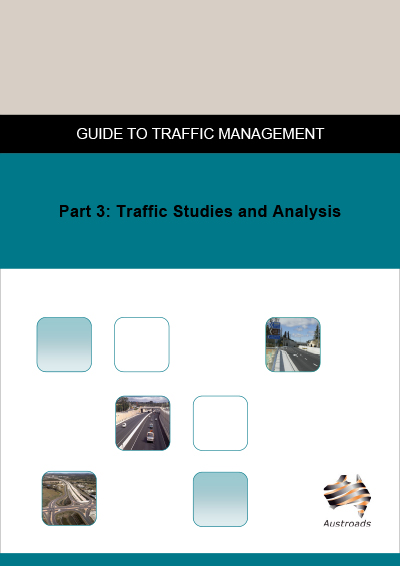Traffic Management

- Publication no: AGTM03-13
- ISBN: 978-1-921991-81-3
- Published: 10 April 2013
- Edition: 2
- Superseded
- PDF (free) Download
Part 3: Traffic Studies and Analysis is concerned with the collection and analysis of traffic data for the purpose of traffic management and traffic control within a network. It serves as a means to ensure some degree of consistency in conducting traffic studies and surveys. It provides guidance on the different types of traffic studies and surveys that can be undertaken, their use and application, and methods for traffic data collection and analysis.
Part 3 covers applications of the theory presented in Part 2 of the guide, and provides guidance on traffic analysis for uninterrupted and interrupted flow facilities and for various types of intersections. It outlines sound methods of analysis for effective traffic management, design and control.
The Second Edition, April 2013, updates previous Austroads guidance on traffic studies and capacity analysis and makes reference to other seminal publications such as the US Highway Capacity Manual(TRB 2010) and the traffic engineering and management handbook from Monash University (2003). This edition updates guidance on traffic studies and surveys by adding emerging traffic survey technologies in both Section 2 and an additional Appendix K. Section 2.3.4 Sample size determination is updated and now includes an illustrative example of sample size determination for a before and after study. This edition also provides an updated capacity definition and level of service criteria for general traffic in Section 3, uninterrupted flow facilities in Section 4, interrupted flow facilities in Section 5 and intersections in Section 6. An additional Section 3.4 is provided for pedestrian level of service based on the latest research from both the US and New Zealand. Finally, an additional Section 6.4.5 is provided as a summary of level of service criteria using delay for unsignalised intersections, roundabouts and signalised intersections.
